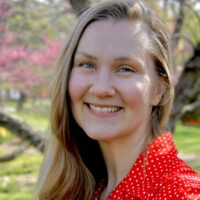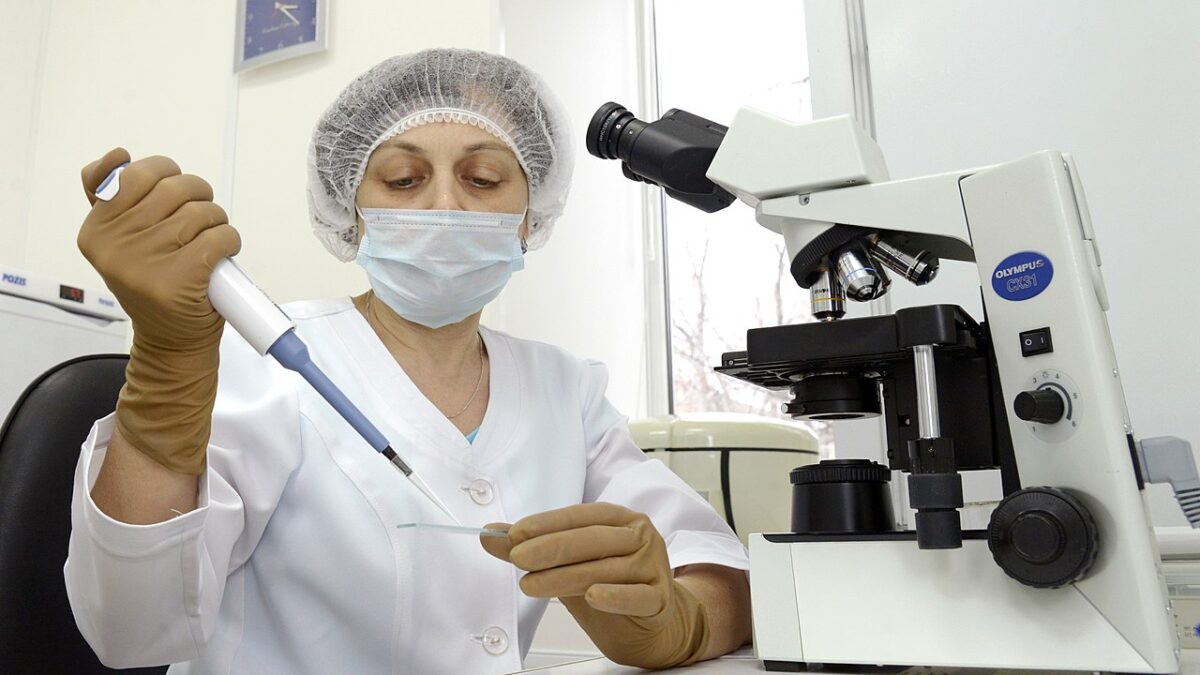
The Centers for Disease Control pulled a world-renowned expert off a vaccine safety advisory committee after he publicly disagreed with the agency’s pause of the Johnson and Johnson COVID vaccine.
In an email, the CDC’s Dr. Amanda Cohn said Dr. Martin Kulldorff of Harvard Medical School was being removed for communicating to the public his expert opinion, which differed from what the CDC was saying publicly at the time. Four days later, however, the CDC reinstated the use of the vaccine, effectively adopting Kulldorff’s recommendation after punishing him for publicly communicating it.
“It has been brought to CDC and ACIPs attention recent public statements you’ve made regarding policy opinions that appear to be pre-determined prior to complete review of data,” Cohn wrote Kulldorff in an April 19 email. “We understand and appreciate that VaST members have personal opinions and we do not object to the expression of those opinions. However, we expect members to be objective and devoid of any appearance of bias… Therefore, CDC is respectfully ending your membership on VaST effective today.”
Agency Follows Doctor’s Punished Recommendation
On April 13, the CDC paused the use of the Johnson and Johnson COVID vaccine nationwide after six cases of blood clotting in women following their vaccination, among which were three deaths. The agency later determined the risk of this outcome was seven cases per 1 million people among women ages 18 to 49, the highest-risk group.
The CDC’s decision to pause the vaccine based on the majority opinion of the committee it pushed him off “did not reflect my views,” Kulldorff told The Federalist. That’s because the risks of COVID are far higher than the essentially zero risk of blood clots from the vaccine for the elderly.
After the April 13 CDC pause, Kulldorff expressed this dissenting professional opinion in an op-ed in The Hill that came out April 17. He wrote:
[T]hose under 50…are better off receiving the Pfizer or Moderna vaccines. Even though many more patients have received those vaccines, no CVST safety problems have been linked to them.
The policy should be different for the older population, for which there were no reported cases of CVST. To deny the J&J vaccine to older people is neither desirable nor necessary. With a pause for all ages, the total vaccine supply will decrease, delaying vaccinations and increasing COVID-19 mortality.
Two days later, Cohn removed Kulldorff from the CDC’s COVID-19 Vaccines Safety Technical Work Group, known as VaST, for “recent public statements you’ve made regarding policy opinions.” Four days after that, the CDC once again allowed the Johnson and Johnson vaccine to be administered.
In an April 23 press conference announcing the reinstatement, CDC Director Rochelle Walensky used Kulldorff’s exact reasoning to justify reinstating the Johnson and Johnson vaccine: “What we are seeing is the overall rate of events was 1.9 cases per million people. In women 18 to 49 years, there was an approximate 7 cases per million, and the risk is even lower in women over the age of 50 at 0.9 cases per million… For every 1 million doses of this vaccine, the J&J vaccine could prevent over 650 hospitalizations and 12 deaths among women aged 18 to 49 and this vaccine could prevent over 4,700 hospitalizations and nearly 600 deaths among women over 50.”
Cohn and other CDC colleagues referred The Federalist’s requests for comment about Kulldorff’s removal to two CDC spokeswomen, who both failed to answer repeated inquiries.
‘His Qualifications Are Spectacular’
Kulldorff is a “world-class” vaccine safety “superstar,” said Jeffrey Brown, a Harvard Medical School colleague specializing in drug and vaccine safety research. “His qualifications are spectacular,” Brown said of Kulldorff. “He’s an international expert in vaccine safety. No one on earth would question whether he’s qualified to be on that committee. He’s a pioneer.”
In fact, methods Kulldorff helped develop underlie the CDC’s current monitoring system for quickly discovering if a vaccine is causing health risks. The Vaccine Safety Datalink (VSD) “is the best in the world at vaccine safety” and “Martin’s methods are what VSD is using,” Brown noted.
Kulldorff has world-class expertise in detecting health risks in the population as early as humanly possible. Over decades, his work has helped doctors and public health officials balance the risks of disease against the side effects of medical intervention. For doing exactly that with the Johnson and Johnson vaccine, a CDC that relies on methods he helped develop punished Kulldorff.
Kulldorff is also a coauthor of the Great Barrington Declaration published Oct. 4, 2020. The declaration argues COVID-19 lockdowns do more harm than good, and that public officials should instead focus protections on those most at risk. The declaration’s other coauthors are Sunetra Gupta of Oxford University and Jay Bhattacharya of Stanford University. All have faced massive public pressure for expressing these views.
“I’m really happy Martin has been willing to say what a lot of people are thinking. It’s not easy for an academic to do that, which is scary. It’s scary that academics feel like they can’t express an alternate view,” Brown said. “The fact that Martin and Bhattacharya, that people are criticizing them for pretty basic epidemiology and public health, is insane. It chills debate when perfectly reasonable opinions are shunned.”
Like other academic and health institutions, the CDC has previously included and published minority opinions on medical matters. For example, when Kulldorff served on a similar CDC advisory group about the measles (MMRV) vaccine, its advisory committees provided both majority and minority interpretations of the data for public knowledge and for the CDC to take into account.
Brown said he’s had conversations with numerous colleagues about how cancel culture like this is affecting their ability to speak and write freely. He thinks part of the reason some scientists are afraid to voice dissenting opinions is the growing proportion of governmental scientific funding that comes in the form of contracts versus grants.
“No one wants to be on the NIH’s bad side,” he noted, especially as federal agencies have shifted increasingly from grants to contracts. Grants are more open-ended and based more on scientific inquiry, whereas contracts are based more on hiring a vendor to pursue a predetermined goal. “It is not clear if the fear of dissenting is grounded or not, but it’s still chilling.”
Stoking Fears and Vaccine Hesitancy
Besides leading to increased COVID deaths due to fewer vaccinations, Kulldorff said, the vaccine pause also was likely to decrease people’s trust in vaccines. Public trust in COVID vaccines has been shaky, with the percentages of poll respondents saying they wouldn’t get such a vaccine fluctuating between 21 and 50 percent since last July. Hesitancy about vaccines in general has also increased in the past decade.
Both pausing the J&J vaccine and refusing to acknowledge its low blood clot risk can increase vaccine hesitancy that can damage lives, Kulldorff said: “It reduces the confidence in vaccines that is unnecessary and damaging. All of us who work with vaccines know about this vaccine hesitancy and we work hard to maintain confidence in vaccines.”
Two methods for reducing hesitancy are public transparency and early detection of negative outcomes, he said. That’s why he recommended keeping the Johnson and Johnson vaccine on the market while also encouraging women at risk of blood clots from it to take one of the other two COVID vaccines.
Instead, the CDC communicated unwarranted certainty about the vaccine to the public, potentially costing lives. A YouGov/Economist poll found that after the CDC’s pause public confidence in the Johnson and Johnson vaccine dropped 15 points, from 57 to 32 percent.
“During this last year, vaccine confidence has been damaged by questionable public health messaging,” Kulldorff noted in his Hill op-ed. “For instance, former CDC director Robert Redfield said that masks may offer more protection than vaccines against the virus. Anthony Fauci, director of the National Institute of Allergy and Infectious Diseases, has asserted that those fully vaccinated must continue to wear masks and physically distance, even though the vaccines provide excellent protection. Some governors and universities have pushed to introduce coercive vaccine passports and mandates, leading many to ask, ‘If the vaccine is so good, why am I being forced to get it?’ The COVID-19 vaccines provide excellent protection, and we cannot afford more such unwarranted vaccine skepticism.”
Shutting Down Speech Because of Politics
“As a public health scientist,” Kulldorff told The Federalist, “I think it’s my obligation to work with any politician or official irrespective of party, if they want my perspective. I care about the lives of both Republicans and Democrats and Independents, and that’s what everyone should do.”
In that pursuit, the Great Barrington Declaration coauthors have advised Florida’s Republican Gov. Ron DeSantis in switching his COVID-19 strategy from lockdowns to focused protection on Sept. 25, 2020. As a result, media organizations such as CBS have targeted DeSantis and his advisors, including by spreading false information.
So has Walensky. Walensky signed the John Snow Memorandum, an Oct. 14, 2020 statement written to counter the Great Barrington Declaration that promotes inaccurate fears that natural infection may not provide lasting immunity, and advocates further lockdowns, mass testing, and contact tracing. The memorandum essentially urges retaining the dominant methods and narratives corporate media have pushed since COVID-19 erupted.
In the John Snow Memorandum, a short radio debate with Kulldorff, and other public statements, Walensky has falsely characterized the Great Barrington Declaration as a strategy that would “let the virus run free without mitigation strategies.”
Kulldorff has repeatedly publicly stated that he does not support “let it rip,” but “focused protection” of well-known high-risk populations, such as the elderly and those in nursing homes. In a March panel with DeSantis, for example, Kulldorff said, “Lockdown is just a form of ‘let it rip,’ but at a little bit of dragging it out more, and by dragging it out more it actually makes it more difficult people for older people to protect themselves, because they have to do it for a longer time. So ‘let it rip’ is not a good strategy.” He also publicly countered the John Snow claim that natural COVID infection does not confer immunity.
Given this, the CDC pushing Kulldorff out of helping oversee vaccine safety systems he helped invent smacks of retaliation against a scientist who has dissented against scientifically indefensible positions repeatedly communicated to the public by top CDC officials.









